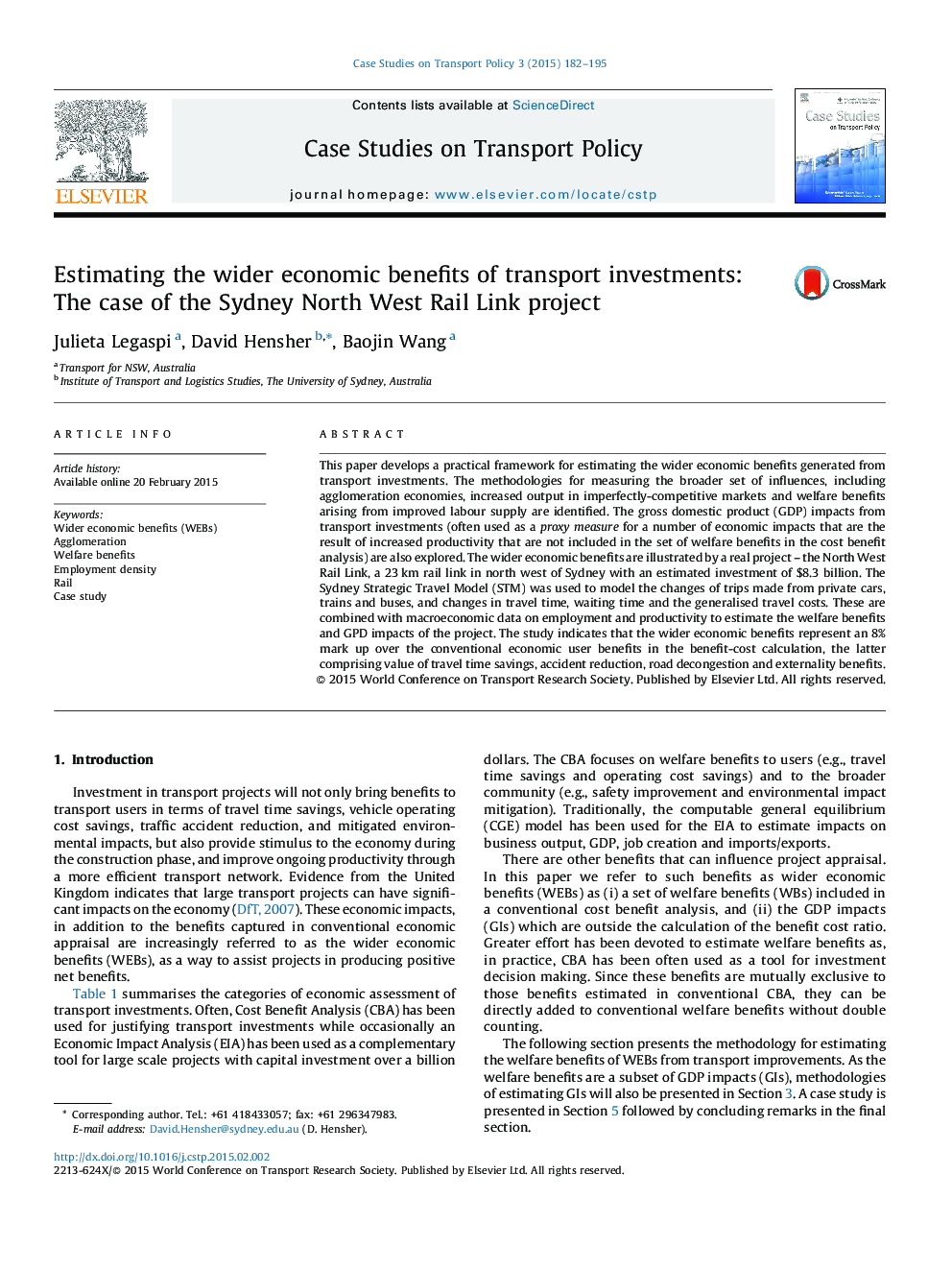| Article ID | Journal | Published Year | Pages | File Type |
|---|---|---|---|---|
| 10283665 | Case Studies on Transport Policy | 2015 | 14 Pages |
Abstract
This paper develops a practical framework for estimating the wider economic benefits generated from transport investments. The methodologies for measuring the broader set of influences, including agglomeration economies, increased output in imperfectly-competitive markets and welfare benefits arising from improved labour supply are identified. The gross domestic product (GDP) impacts from transport investments (often used as a proxy measure for a number of economic impacts that are the result of increased productivity that are not included in the set of welfare benefits in the cost benefit analysis) are also explored. The wider economic benefits are illustrated by a real project - the North West Rail Link, a 23Â km rail link in north west of Sydney with an estimated investment of $8.3 billion. The Sydney Strategic Travel Model (STM) was used to model the changes of trips made from private cars, trains and buses, and changes in travel time, waiting time and the generalised travel costs. These are combined with macroeconomic data on employment and productivity to estimate the welfare benefits and GPD impacts of the project. The study indicates that the wider economic benefits represent an 8% mark up over the conventional economic user benefits in the benefit-cost calculation, the latter comprising value of travel time savings, accident reduction, road decongestion and externality benefits.
Related Topics
Physical Sciences and Engineering
Engineering
Civil and Structural Engineering
Authors
Julieta Legaspi, David Hensher, Baojin Wang,
